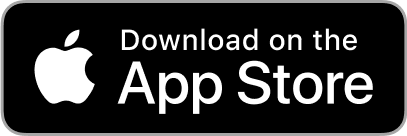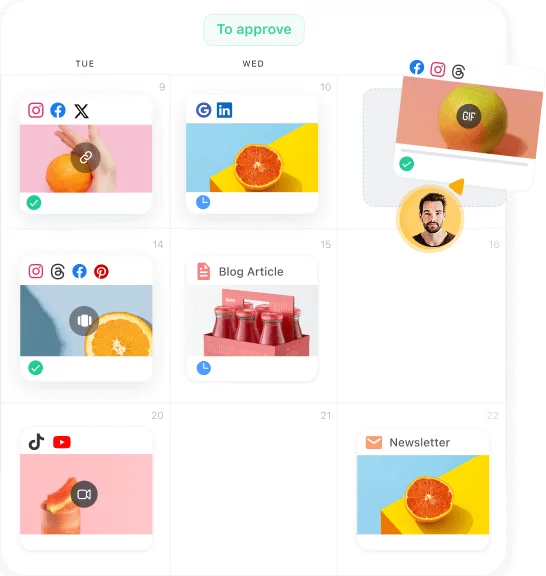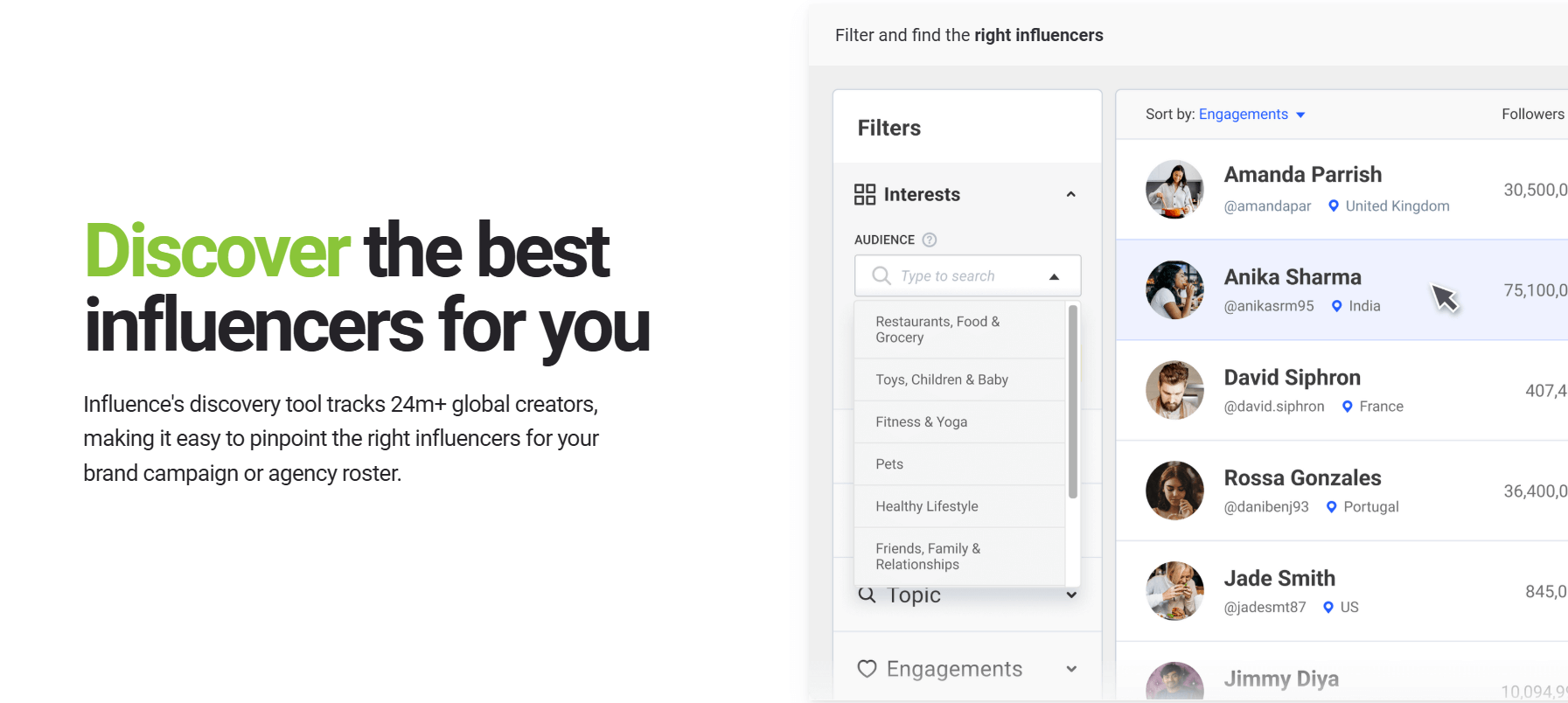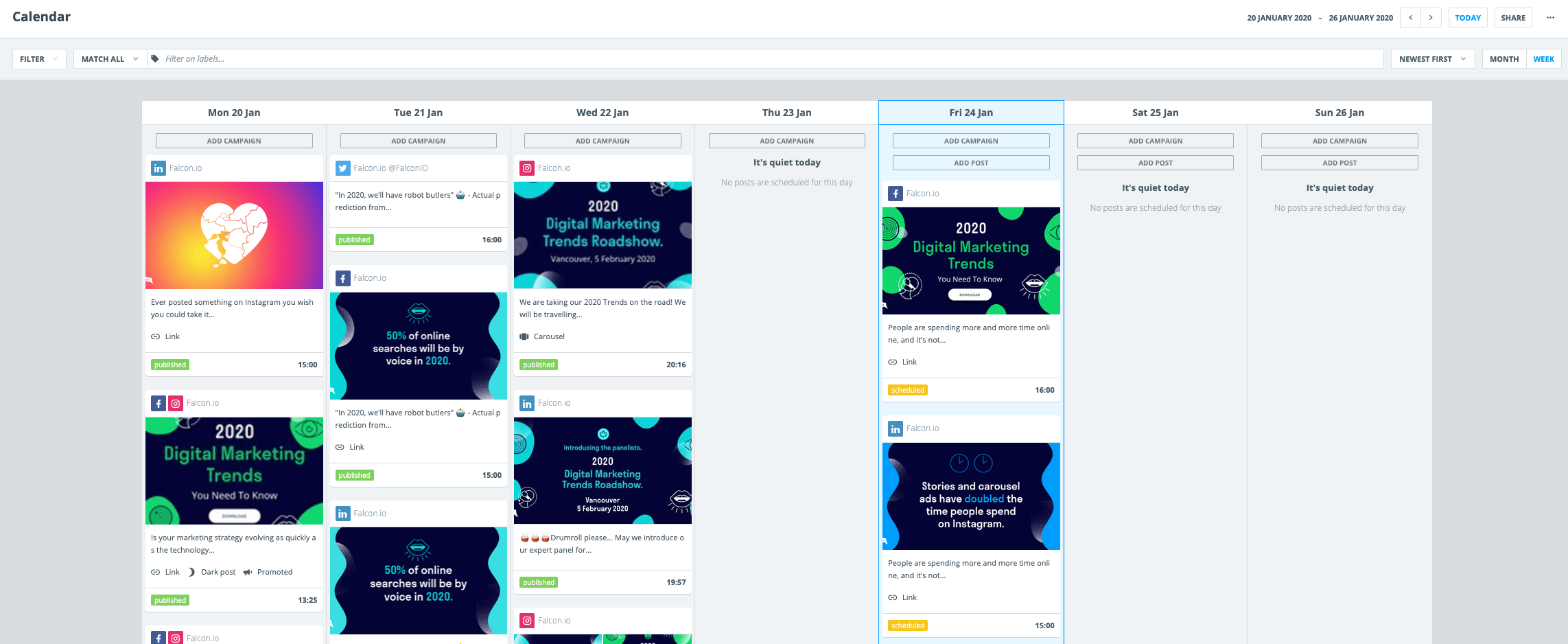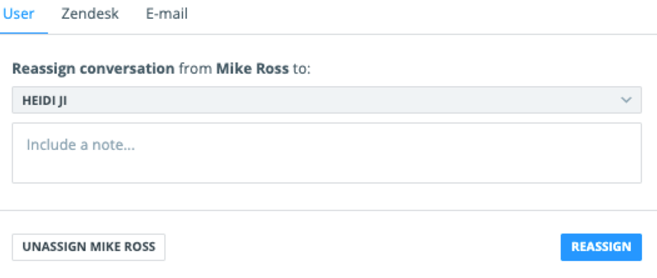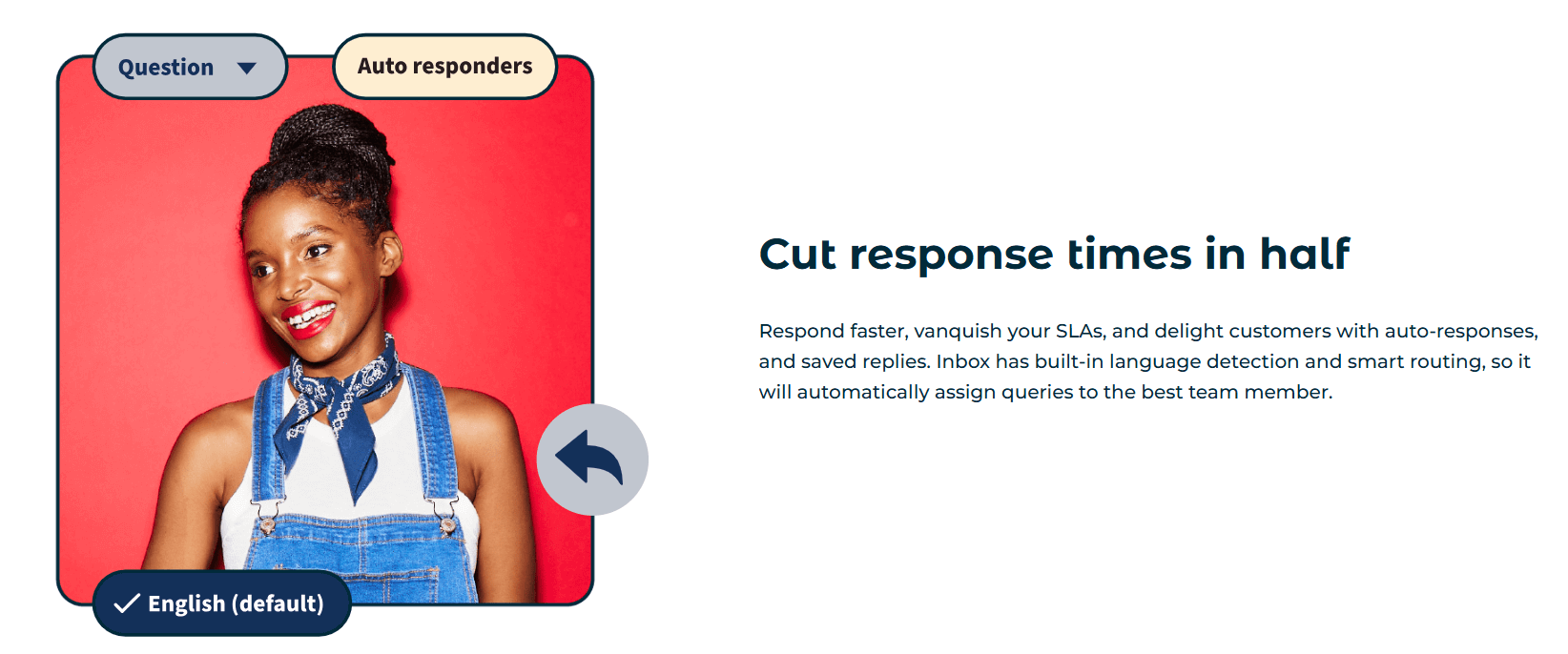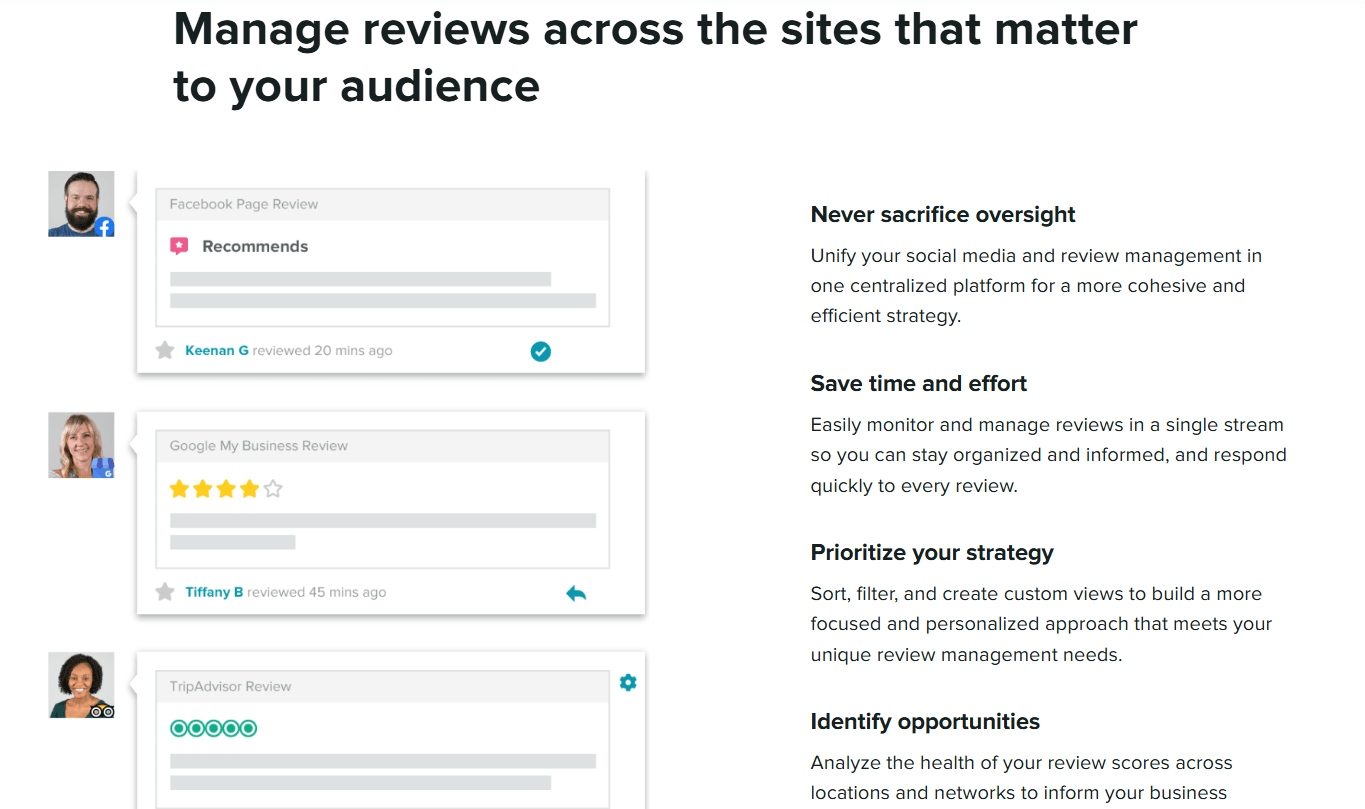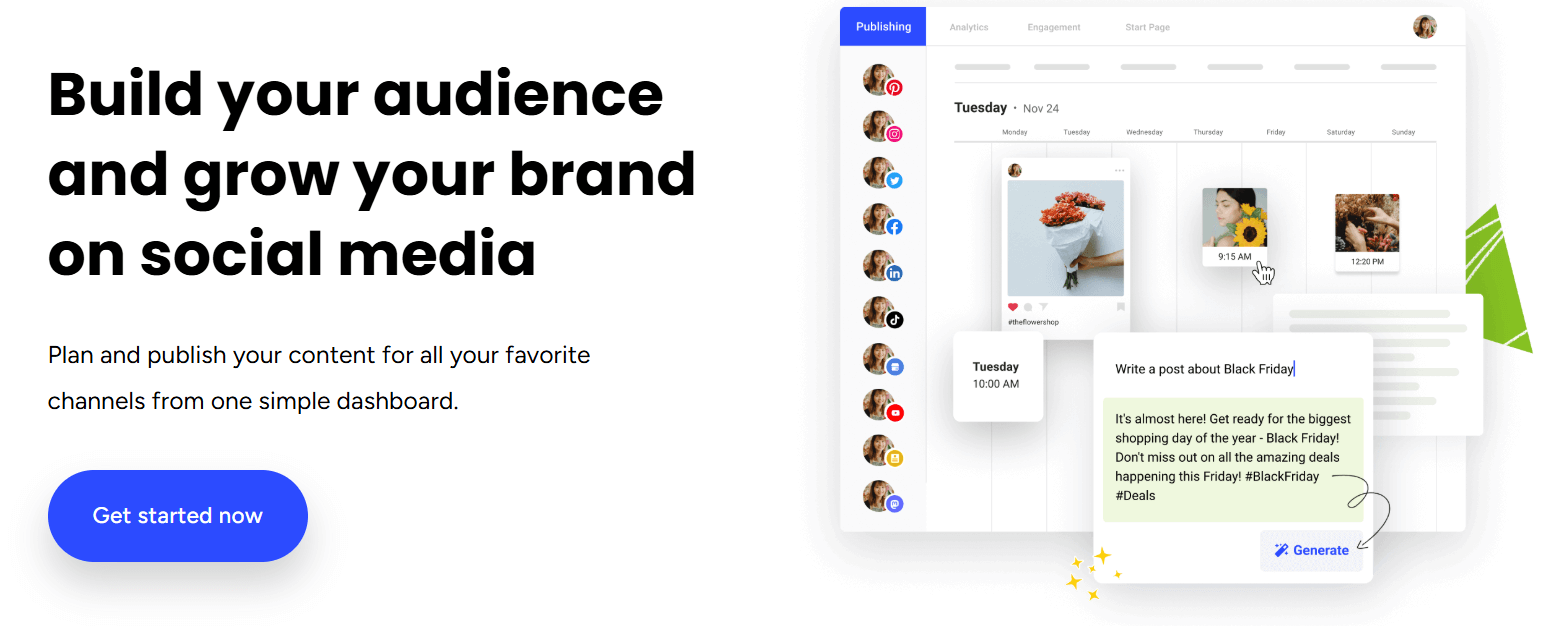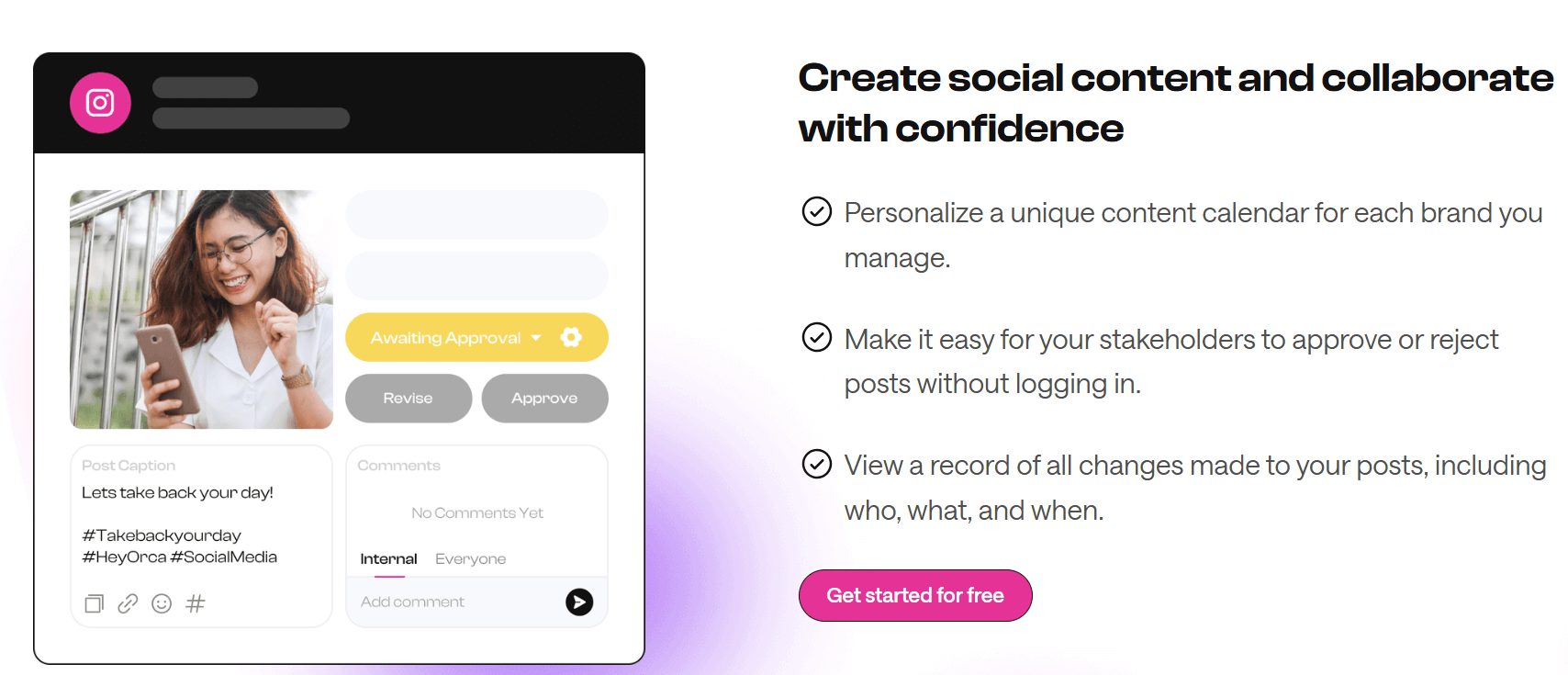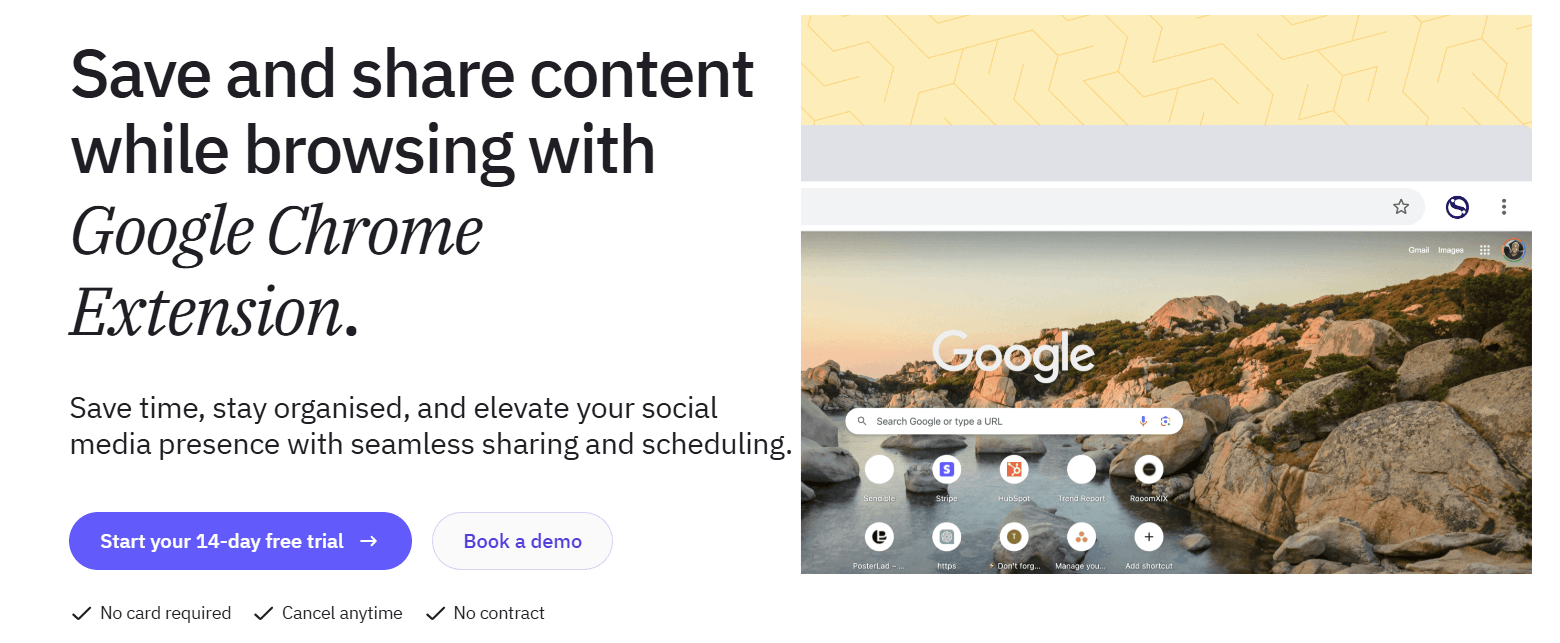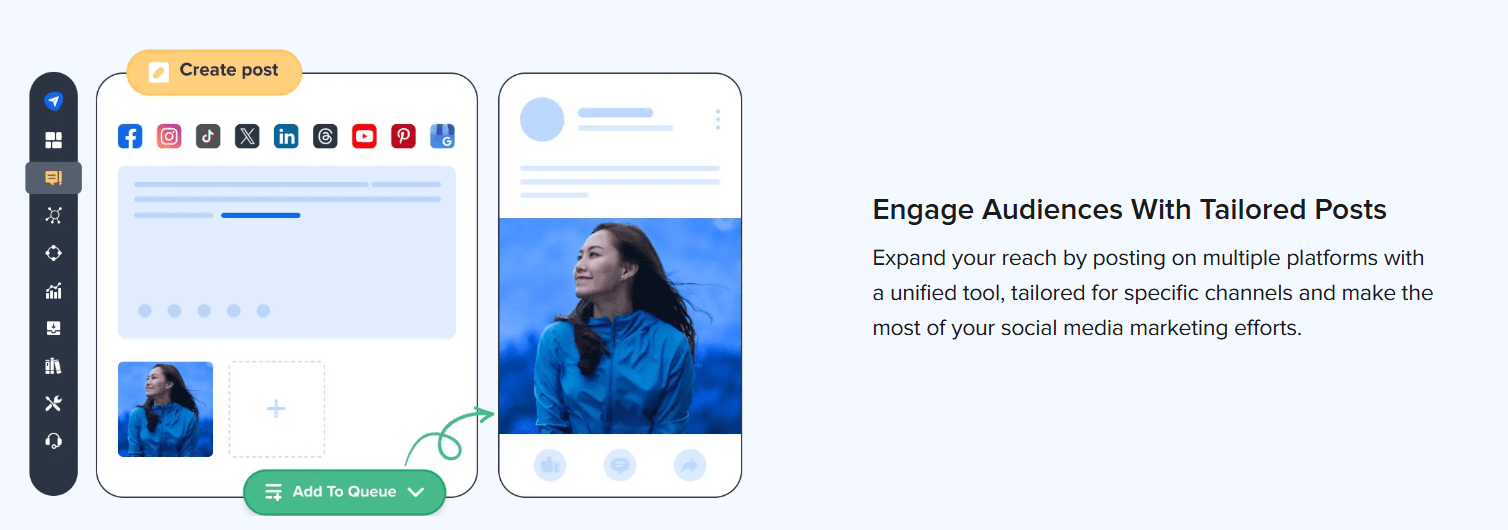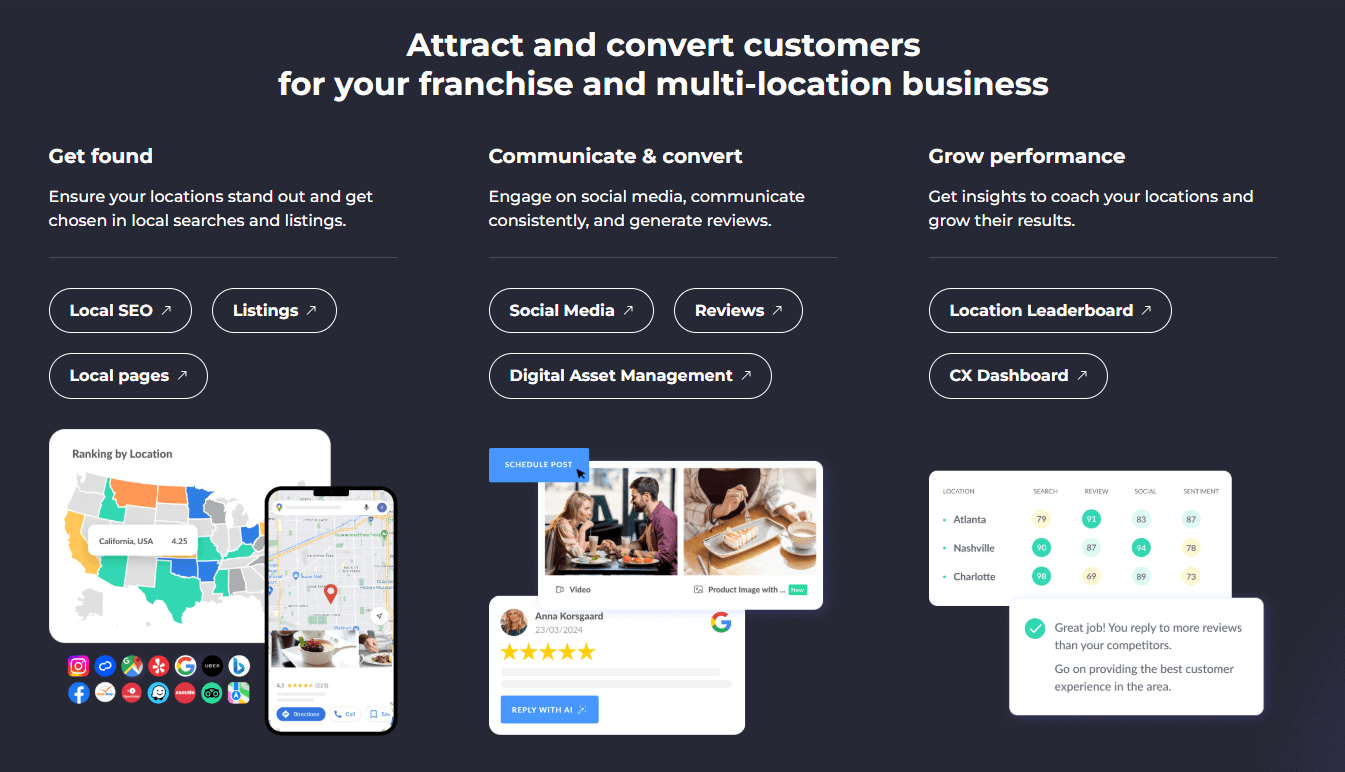Haven’t you heard the latest rumor yet? Nearly all social media marketers chatter these days that commenting will outshine posting as a growth strategy. But actually, this is not someone’s fantasy or baseless gossip spread across the digital space. As we approach a...
Top Brandwatch alternatives & competitors
8 best Brandwatch alternatives for social media managers & agencies

Brandwatch seems to check all the boxes social media managers may look for at first — it handles content planning, analytics, social media monitoring, influencer marketing, and loads more. But it does lack critical features and is often subject to bugs.
So, let me walk you through eight solid Brandwatch alternatives you should consider if you’re looking for another way to sort your socials.
But first, let’s look at what Brandwatch is about. I’ll show you where it aims to streamline social media management processes, but also where it falls short.
Why should you consider a Brandwatch alternative?
Brandwatch is a product suite that offers social media monitoring, management, and influencer marketing solutions.
The platform’s consumer intelligence tool scrapes data from all across the web — multiple social media networks, community forums, and blogs — and offers the tools needed to compile and segment data into actionable insights.
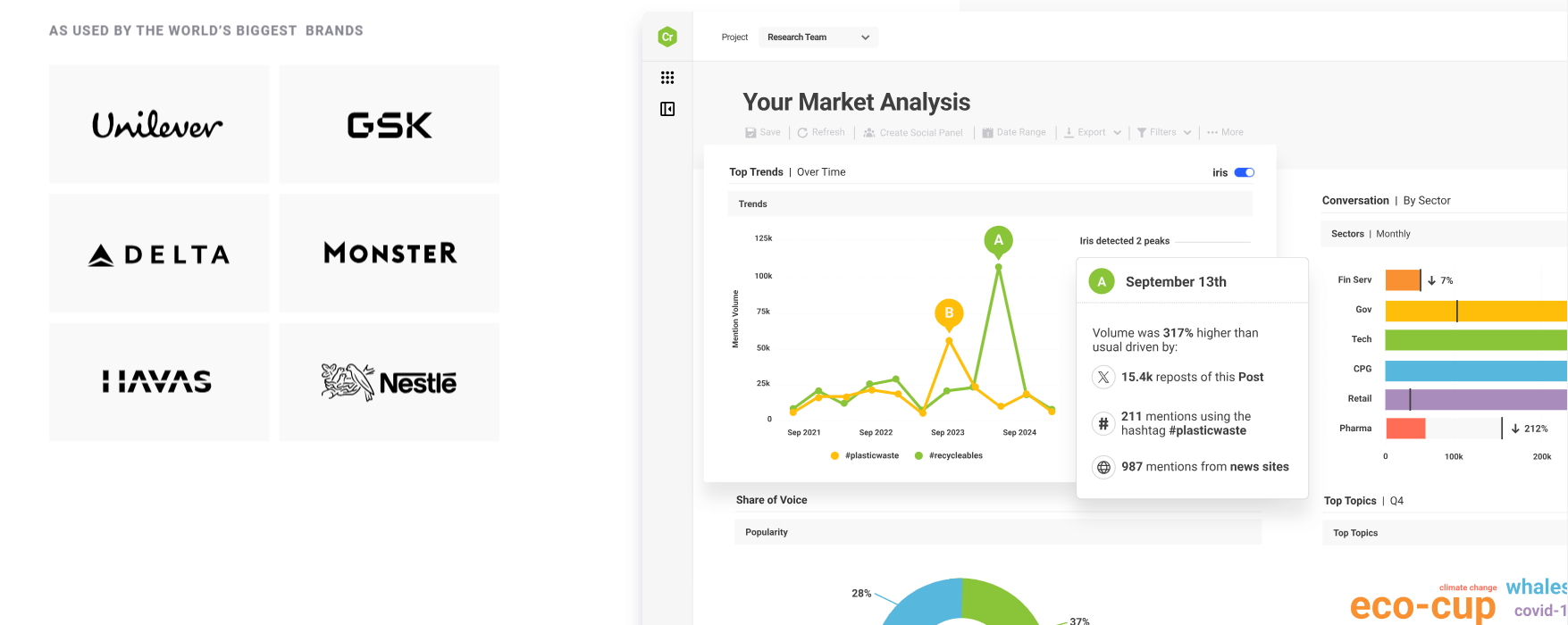
Brandwatch’s market analysis dashboard
As for social media management, Brandwatch lets you plan and schedule your posts via an intuitive calendar view. But the standout here is its social inbox — you can respond to comments and DMs from all your social media accounts (WhatsApp included) and set up follower profiles which you can plug into your CRM via the platform’s native Salesforce integration.
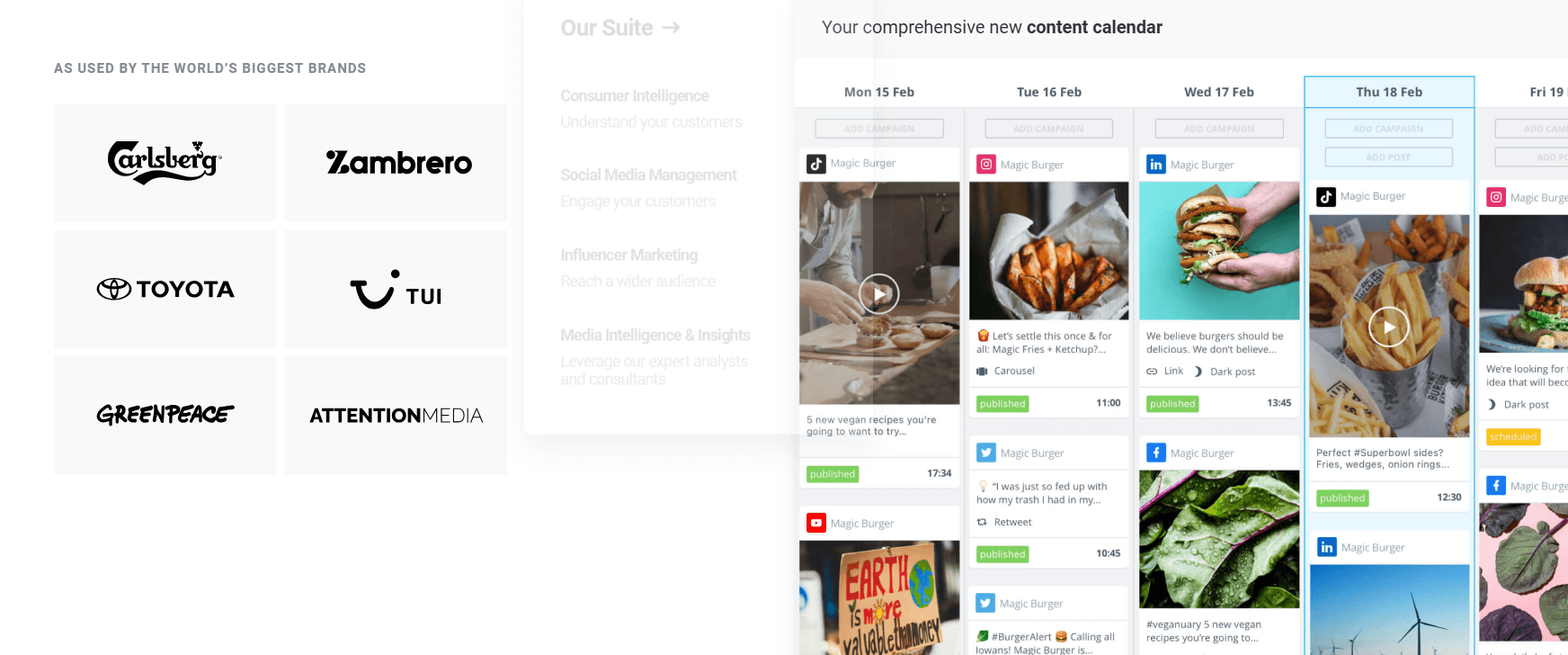
Brandwatch’s content calendar
Wrapping up with influencer marketing, Brandwatch includes a broad database of influencers — complete with follower count and average engagement across platforms — and the features to collaborate and pay influencers directly within the platform.
Although everything sounds great on paper, the platform’s complexity is one of its biggest downfalls. Users commonly report bugs and glitches across each Brandwatch product. On top of that, although the platform covers a broad feature set, it’s rather shallow. For example, the platform’s social media management tool lacks support for Threads and Pinterest.
That said, let’s see how the platform handles critical aspects of social media management. I’ll walk you through the platform’s publishing and content collaboration tools.
Calendar
The platform’s calendar view is on par with most other content calendar tools. You can schedule social media posts via an intuitive interface and track each post’s publishing status directly within the content preview.
Most notably, Brandwatch also handles paid content. You can schedule, track, and manage boosted posts or full-on ad campaigns in the platform’s calendar — perfect for a complete overview of your content marketing strategy. Other handy features include built-in URL shorteners, link in bio page builders, and the option to leave calendar notes.
But again, the platform’s lack of direct publishing for Threads and Pinterest is a drawback. Brandwatch could also do with some extra features, like recurring post scheduling and ideal posting time suggestions — which other social media scheduling tools in this list do cover.
Collaboration
Brandwatch’s collaboration tools are solid. The platform handles collaborative work via comments and the option to assign incoming messages to specific team members.
It also lets you work with external collaborators while its internal notes ensure particular feedback is only visible to in-house team members.
Unlike other content collaboration tools, however, Brandwatch lacks clear text suggestions and annotations, which could’ve helped with more precise feedback.
Approvals
Establishing a marketing approval process with Brandwatch is quite straightforward. You can set up approval workflows in the platform’s publishing editor.
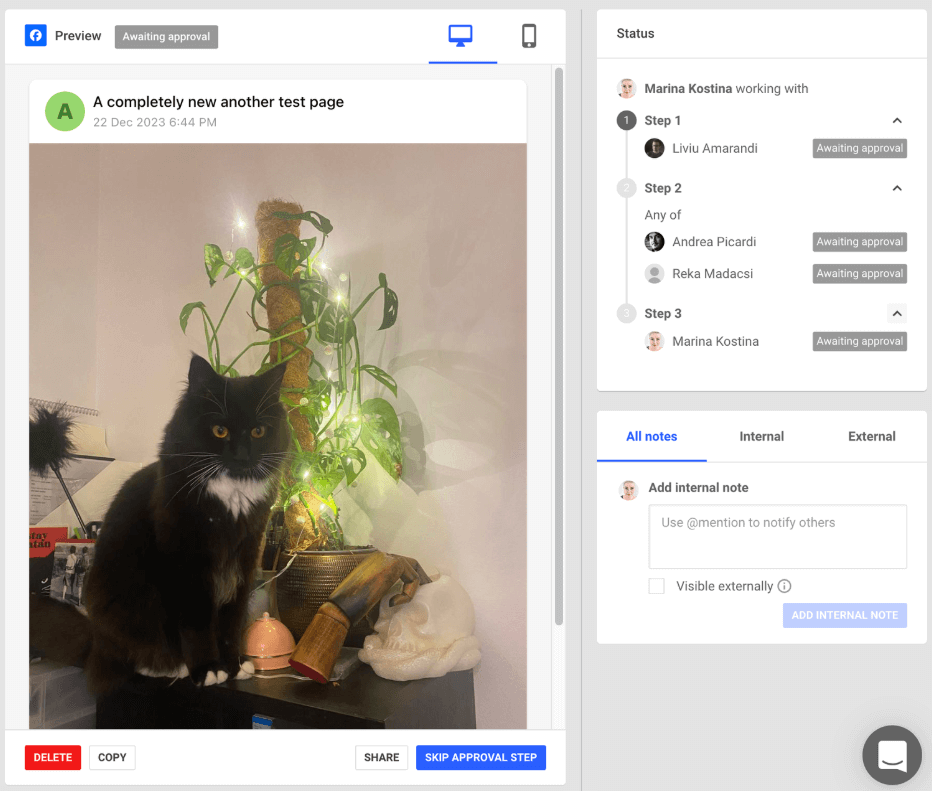
Brandwatch’s social media post preview
Most notably, the platform allows for multi-level approval workflows — you can set up multiple approval layers, each containing as many team members as you want. A social media post has to go through each distinct layer before publishing.
The only drawback I found is that reviewing and approving content takes quite a few clicks. You’ll first need to navigate to the Awaiting Approvals tab, click on a post, then select Ask For Changes, and type in your feedback from there.
The lack of text annotations can also lead to unnecessary back-and-forths between content creators and reviewers, unlike other dedicated approval tools.
Pricing: Pricing is not disclosed — you’ll need to get in touch with the sales team.
Here’s why social media managers should consider a Brandwatch alternative
- Usability: The platform’s frequent bugs and glitches are a massive drawback. Users also report a rather steep learning curve.
- Features: Brandwatch lacks otherwise expected features, like direct Pinterest publishing and recurring post scheduling.
- Accessibility: Brandwatch is not a plug-and-play solution. Pricing is not disclosed — you’ll need to first reach out to the sales team to get a customized pricing model and product.
1. Planable – best for content planning, collaboration, and approval
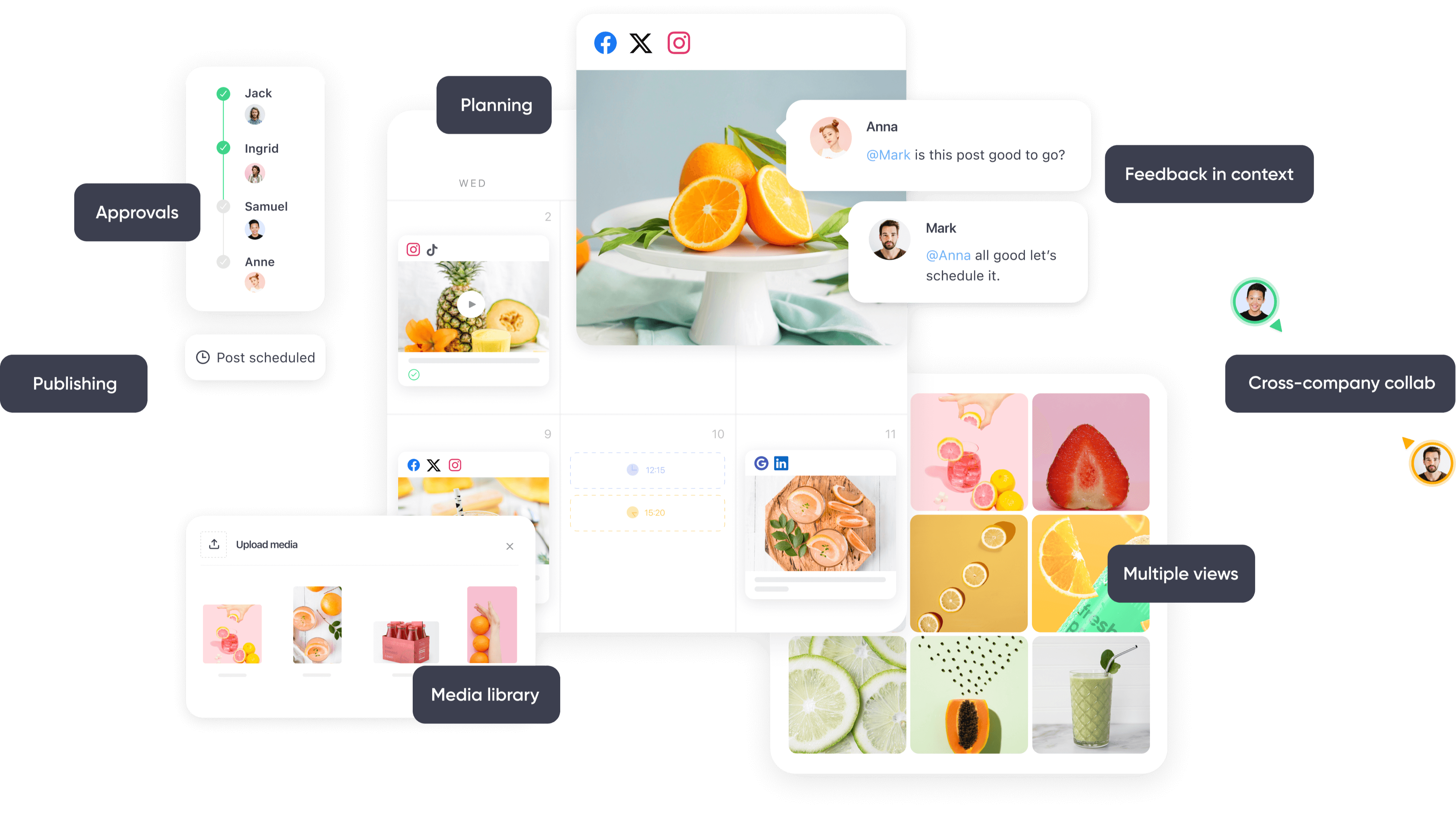
Planning, approvals, publishing, media library access & collaboration in Planable
Planable is an all-in-one social media management solution for agencies, brands and creators with highly capable social media publishing and content collaboration features. The platform supports all popular social media platforms (Threads and Pinterest included), while its straightforward calendar view lets you schedule posts via a drag-and-drop interface.
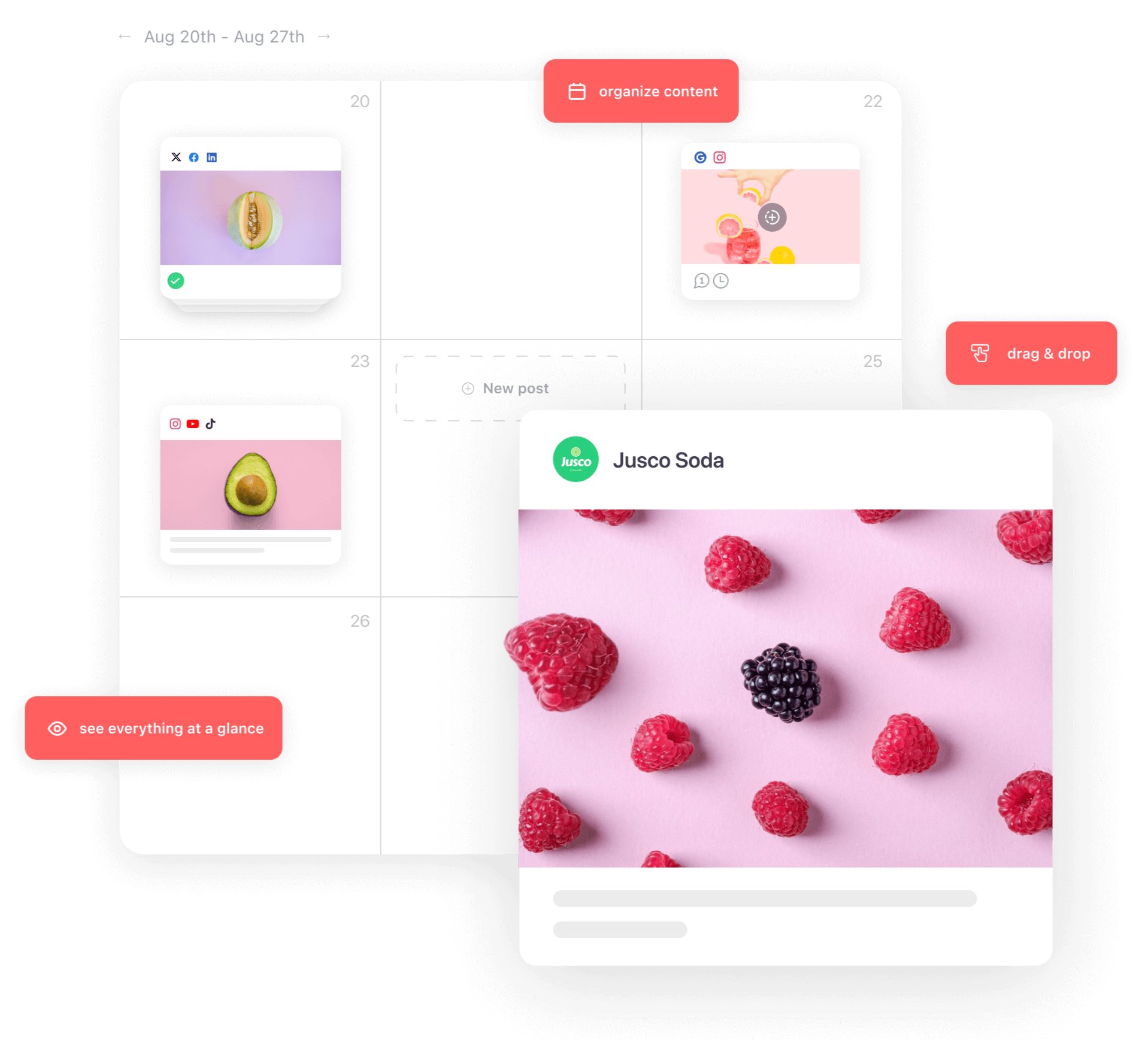
Planable’s content calendar with drag-and-drop functionality
As for collaboration, Planable handles feedback through in-context comments, annotations, and clear text suggestions — just like Google Docs, but better. Plus, the platform’s collaboration features extend to other content formats via its Universal Content functionality — ad copy, newsletters, blog posts, video scripts, you name it.
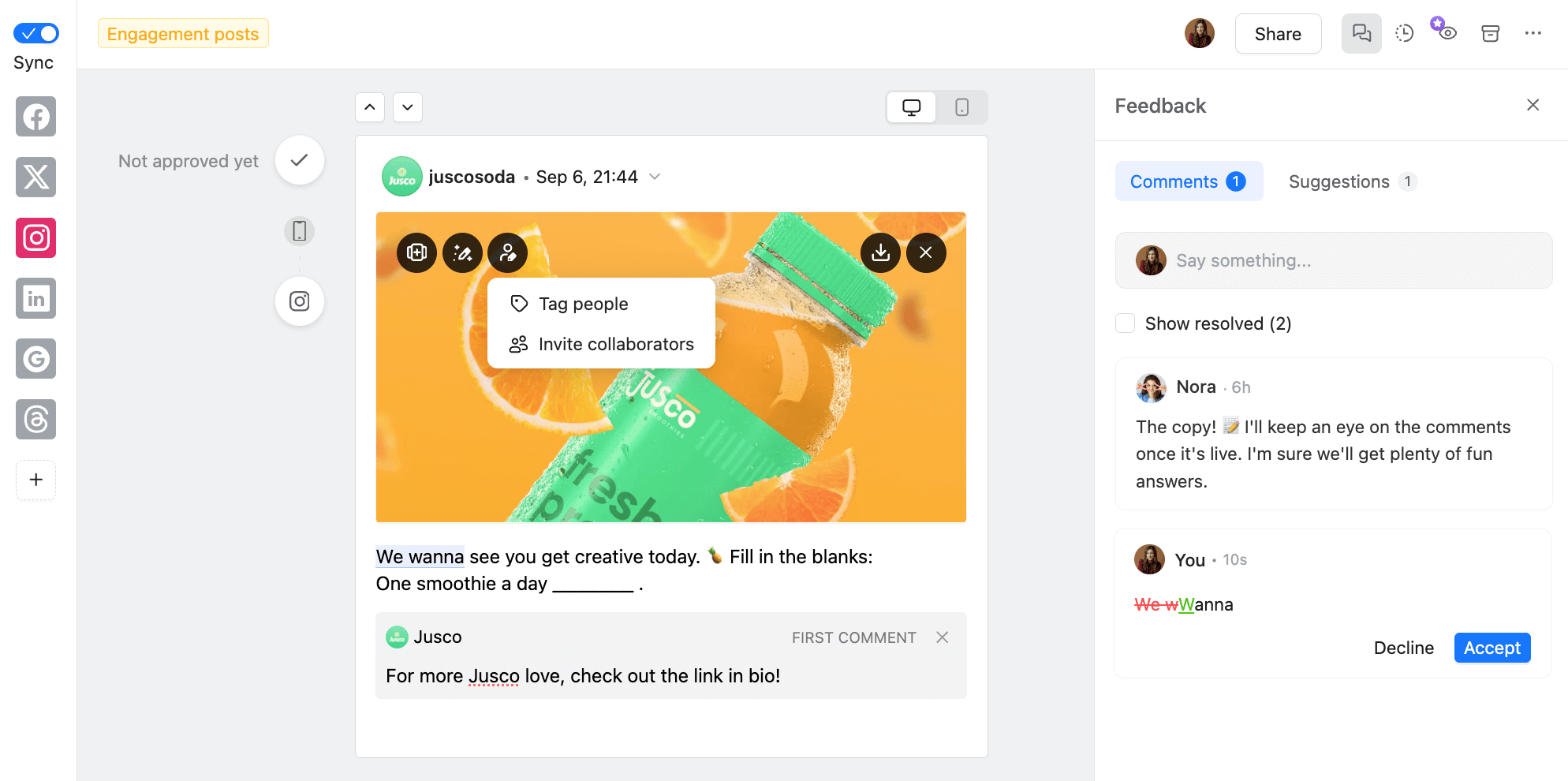
Collaboration on an Instagram post in Planable
Working with external collaborators is also a breeze. You can set up brand, project, or marketing campaign-specific workspaces and have freelancers and clients join your workspace through shareable links — no account setups required.
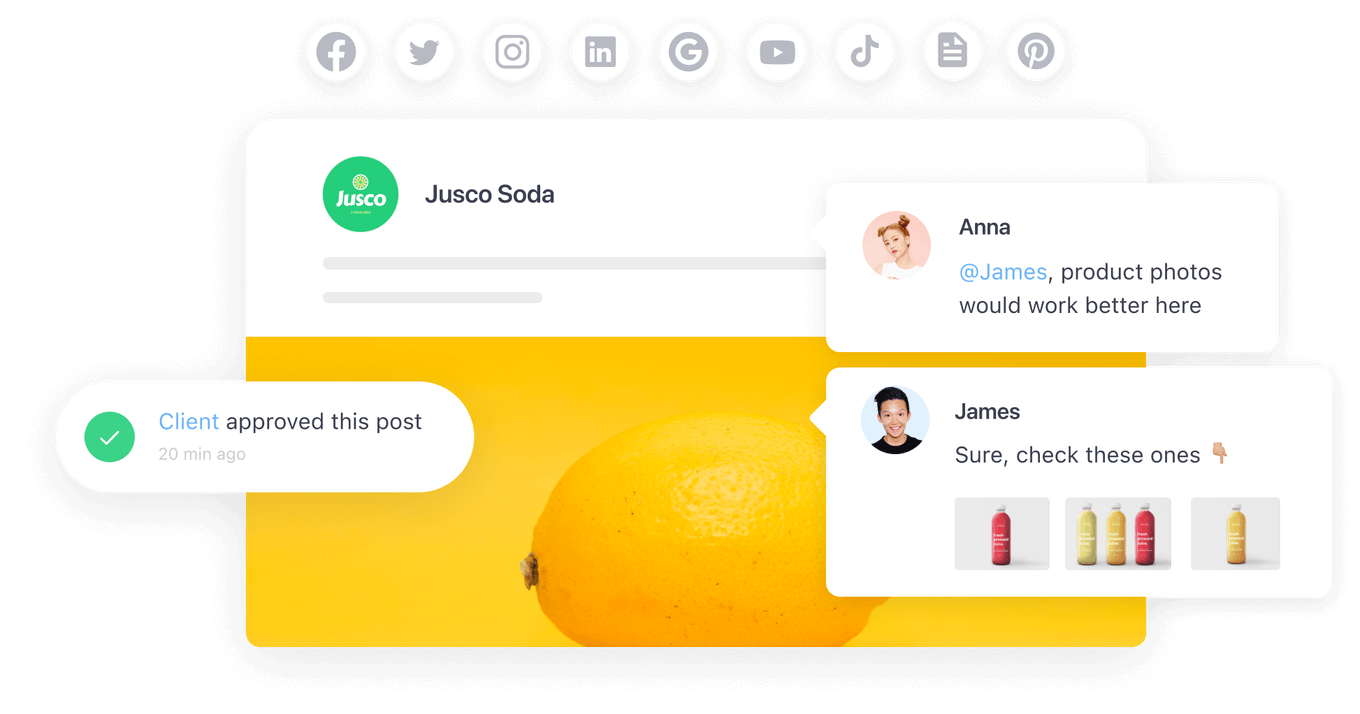
Social media post approval interface in Planable
This is where Planable’s fully customizable multi-level approval workflows also come in handy. You can set up content approval workflows containing multiple layers. Content has to go through each distinct layer before the client decides whether to give the green light.
Now let’s see more about how Planable stacks up against Brandwatch in its calendar, collaboration, and approval tools.
Calendar
Planable’s calendar is just as straightforward as Brandwatch’s. But it does come with some improvements. You can schedule recurring posts across multiple social networks in a few clicks. Planable’s filter set also makes it easy to find specific posts.
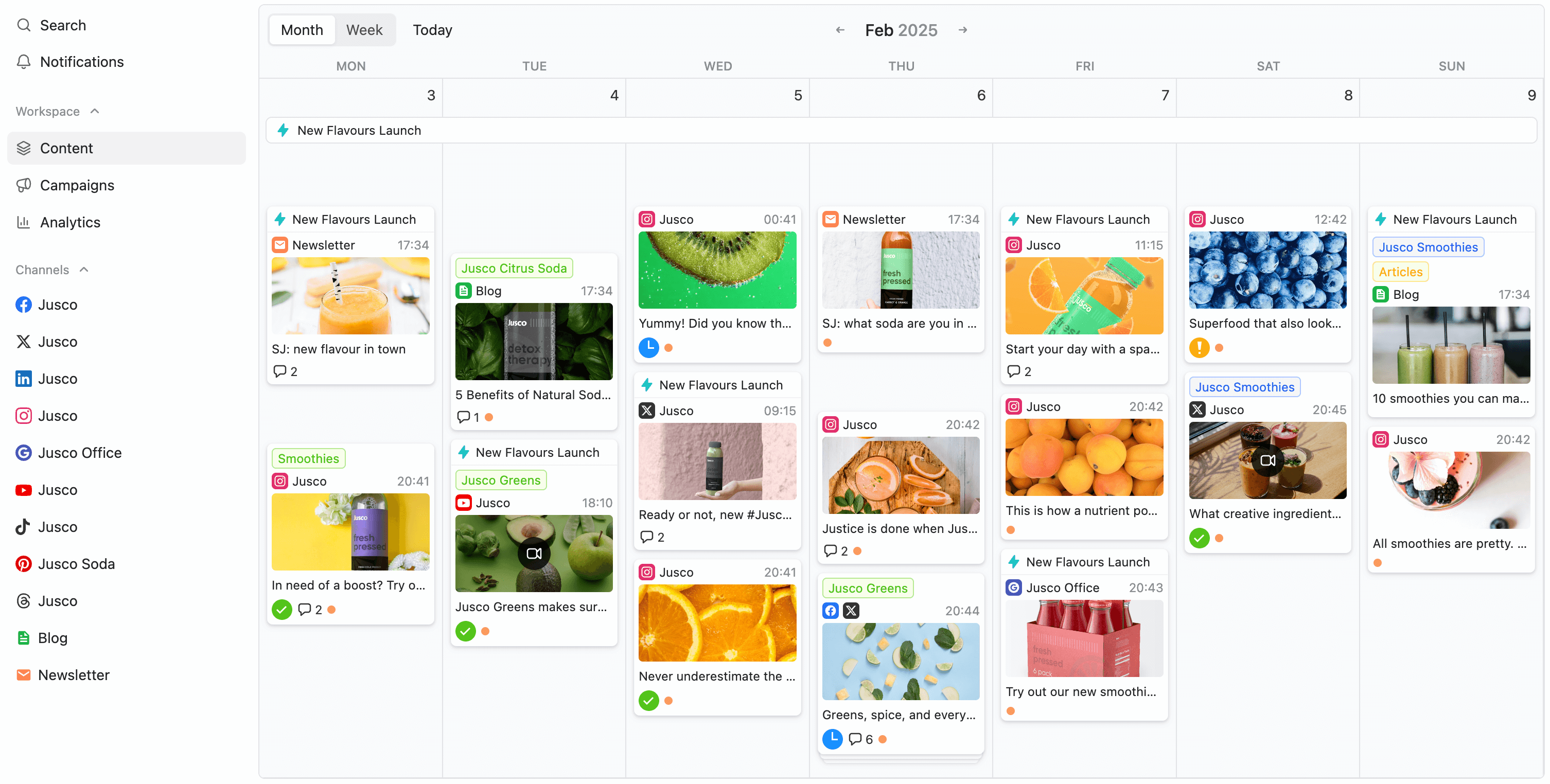
Content calendar view in Planable
You can sift through content by type (images, video, GIFs, etc.), approval status (approved, partially approved, pending approval), and authors, for example. And its custom color-coded labels so let you easily differentiate between campaigns.
I found the option to approve posts and notes right on the calendar view particularly handy. You can also view and schedule posts via list, grid (Instagram-specific), and feed views.
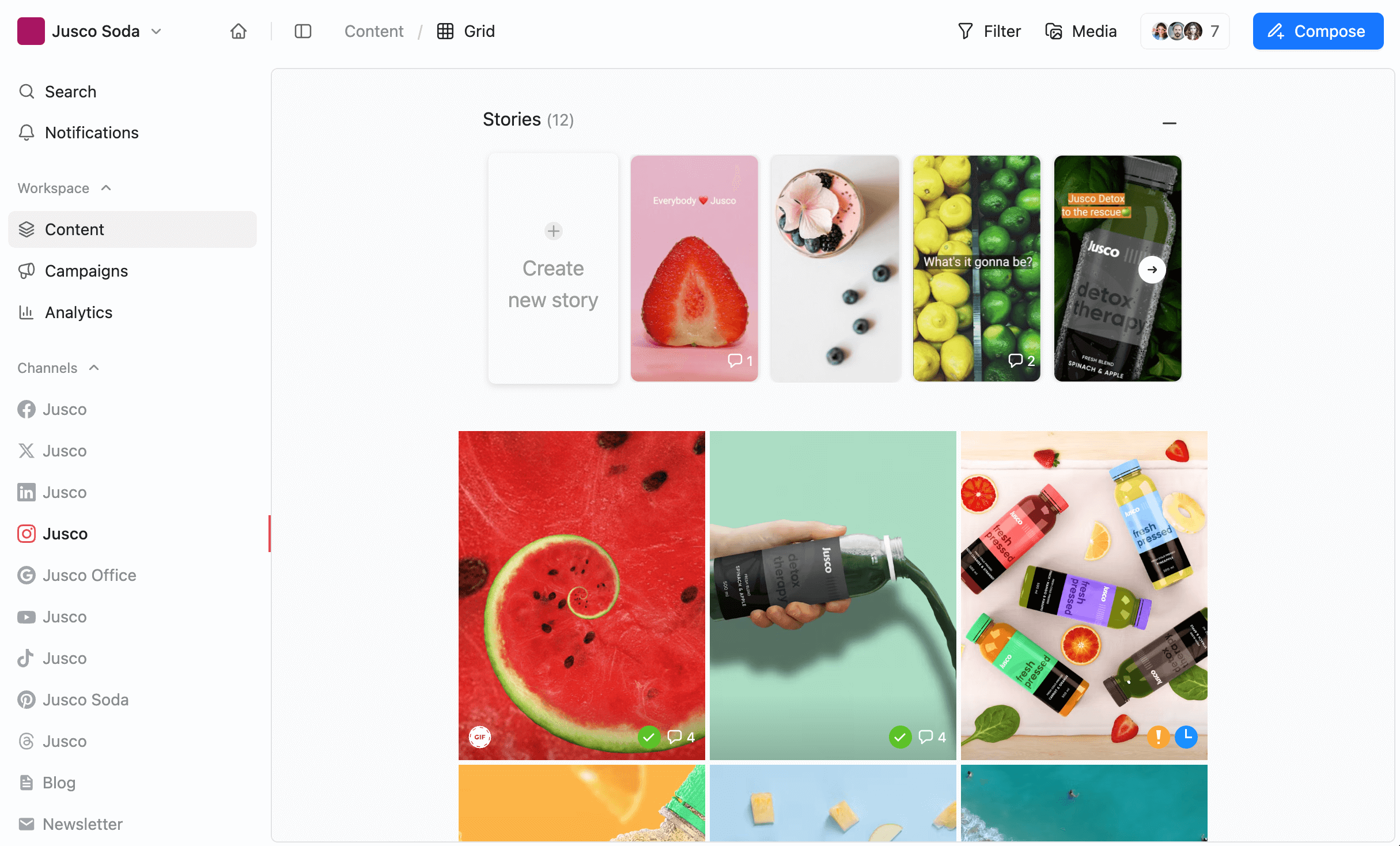
Planable’s Instagram Grid view
As for drawbacks, Planable doesn’t include social media ad campaign scheduling and tracking.
Collaboration
Besides real-time comments, annotations, and suggestions, Planable also lets you mark comments or entire posts as internal.
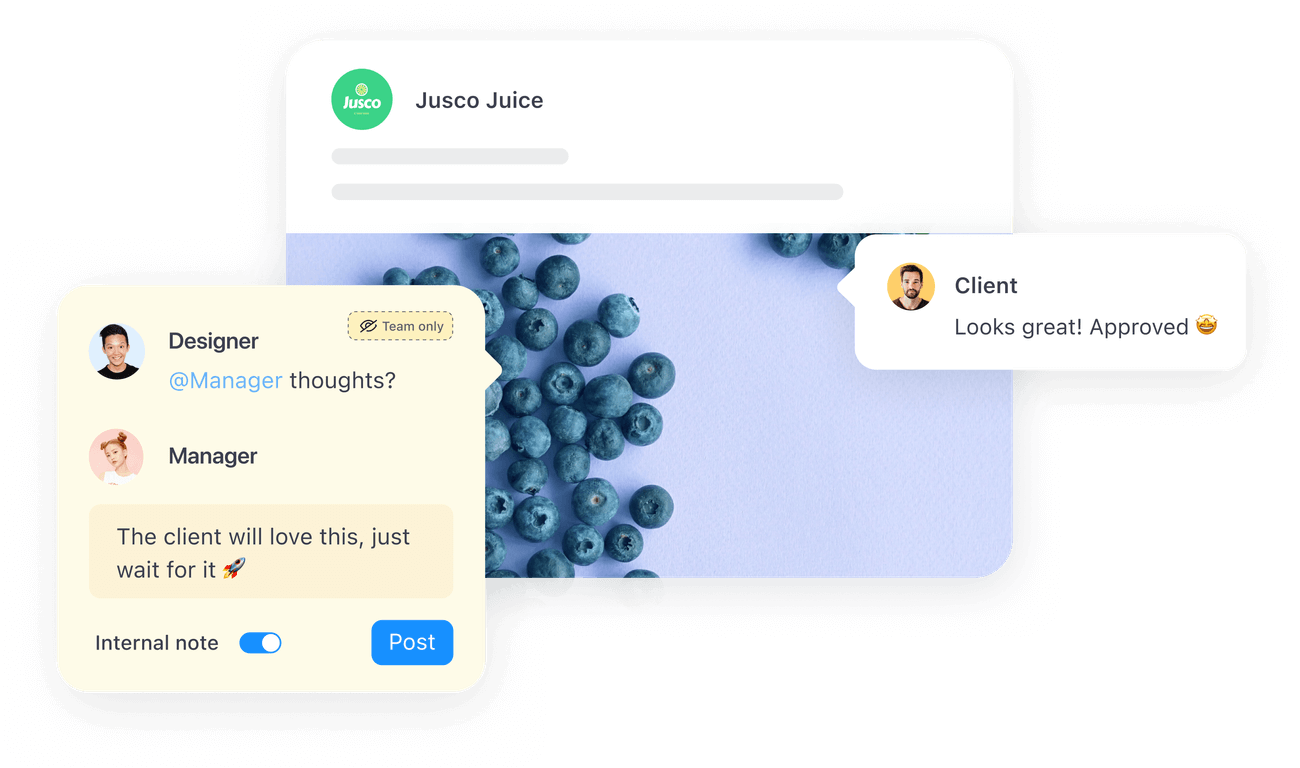
Collaboration via internal notes for a social media post in Planable
That means clients and other external stakeholders won’t be able to see feedback shared among in-house team members — ideal to keep ongoing work away from your client’s view until it’s ready.
You also have complete control over who does what via the platform’s workspace-specific custom user roles and permissions. You can assign roles like viewer only, editor, publisher, approver, and more.
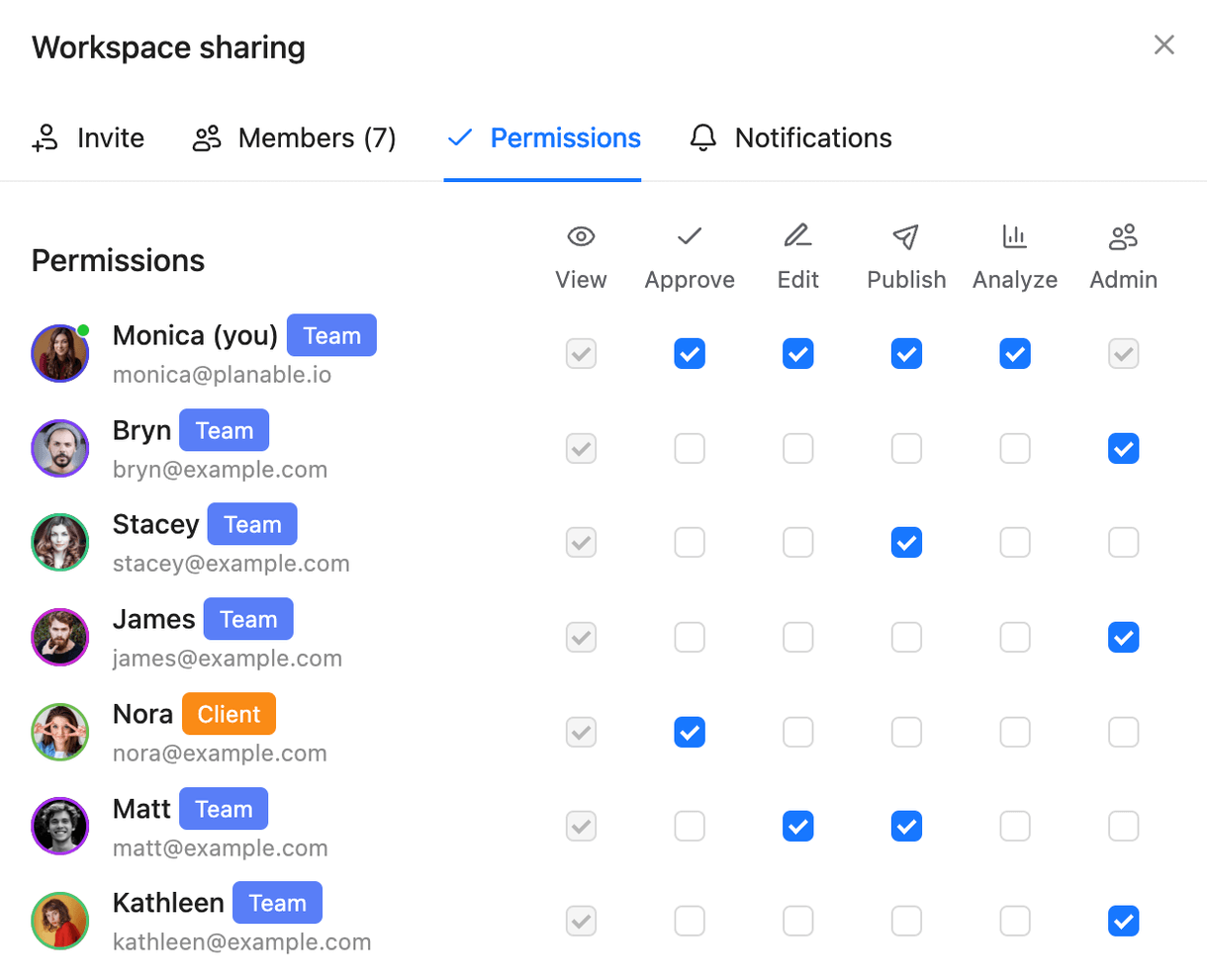
Setting workspace permissions in Planable
Approvals
Approvals are Planable’s hallmarks. You can pick between four approval workflow types based on your specific needs: none, optional, required, and multi-level.
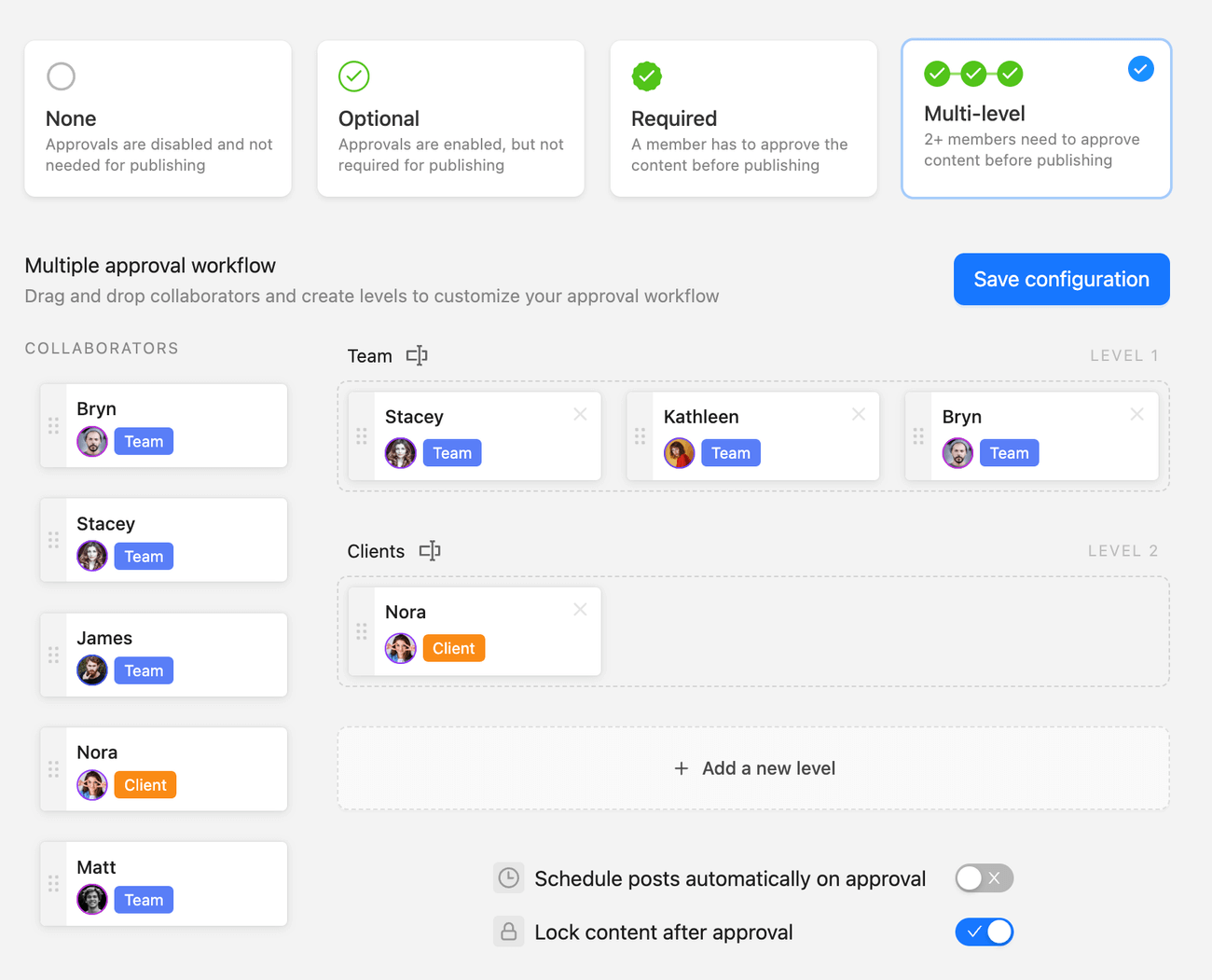
Multi-level approval workflow in Planable
Optional approvals are great if you cannot have a dedicated reviewer always on stand-by — content can still get published without getting approved. And if you work alone, you can skip the approval process entirely.
Other handy features include the option to assign both in-house and external approvers within the same multi-level workflow — ideal for ensuring thorough review processes before content reaches the clients.
You can also automatically schedule or lock content upon approval. Locking content prevents anyone from making additional tweaks after the content is approved.
Pricing: Planable starts at $33 per month per workspace (yearly billing). You can also schedule your first 50 posts completely for free. You can unlock Planable’s analytics capabilities for an extra $9 per month per workspace (yearly billing).
Drawbacks: Unlike Brandwatch, Planable currently doesn’t include social listening tools.
Planable vs Brandwatch
- Social media management capabilities
Both platforms excel in their own niche. Brandwatch focuses more on social media listening, while Planable is excellent for easy scheduling and in-depth approval processes.
- Depth of features
Brandwatch offers a broader feature set, like its dedicated influencer marketing and consumer intelligence platform, but these all feel rather shallow. Planable’s features are more in-depth — especially in content collaboration, approval, and calendar features.
- Ease of use
Users commonly report that Brandwatch has a bit of a learning curve. It’s occasional bugs and glitches can also cause frustrating experiences.
Takeaway: Planable is one of the best Brandwatch alternatives for agencies on the lookout for easy client collaboration and social media scheduling.
2. Hootsuite – best for analytics and social media customer service
Hootsuite is an all-in-one social media management tool with excellent analytics and social customer service features. You can run performance reports across one or multiple social media platforms, and compare account metrics side-by-side.
Hootsuite also offers the tools to respond to and manage customer DMs and comments within a unified message inbox. You can also leverage the platform’s contact management tools to organize leaders and leave notes, while Hootsuite’s auto-responders and skill-based routing capabilities ensure prompt replies to all inquiries.
Key features
- Social media management
Schedule posts across multiple networks simultaneously and use the platform’s ideal posting time suggestions to maximize reach and engagement. Manage social ad campaigns and have high-performing organic content automatically turn into boosted posts to improve brand visibility.
- Competitive and industry benchmarks
Stack your social media performance against your competitors or industry benchmarks side-by-side via the platform’s dedicated benchmarking tools. Gain valuable insights into top-performing content formats, hashtags, and ideal posting frequency.
- Team management
Use Hootsuite’s Organizations to group multiple teams under the same workspace — ideal for working with large brands. Assign customer messages to specific team members and approve both social media posts and service agent replies before rolling them out.
Pricing: Hootsuite starts at $99 per month (yearly billing) with one user included. You can also try out the platform for 30 days at no cost.
Drawbacks: Hootsuite is lackluster in collaboration tools. It lacks comments and annotations, for example.
3. Sprout Social – best for brand reputation management
Sprout Social is an all-in-one social media marketing and management platform with particularly powerful brand management tools. The platform lets you monitor brand and keyword mentions across multiple touchpoints — be it social networks and review platforms like Yelp, Trustpilot, and Tripadvisor, for example.
Its social media listening tools also display all incoming messages within unified inboxes, while Sprout Social’s message spike alerts and sentiment analysis features will let you know whenever there’s a sudden surge in DMs along with their overall tone.
Key features
- Social media marketing
Set up and manage cross-network social media campaigns via the Campaign Planner. Assign specific tags for each campaign for easy tracking. Leverage the platform’s content ideas and posting time suggestions to maximize reach and engagement.
- Social engagement tools
Streamline social media customer service via Sprout Social’s native Salesforce Service Cloud integration. Set up chatbots, get AI-assisted replies, and use the platform’s social media monitoring tools to quickly address customer feedback.
- Reports and analytics
Compare paid and organic post performance side-by-side. Track your top-performing hashtags to spot any potential consumer trends and monitor agent response rates.
Pricing: Sprout Social starts at $199 per user per month (yearly billing). There’s a 30-day free trial available.
Drawbacks: The platform’s steep price tag might be out of reach for agencies with smaller budgets. There are also extra paid add-ons to access more advanced social listening and analytics tools.
4. Buffer – best for maximizing brand visibility and awareness
Buffer’s ample set of supported networks makes it a solid option for brands seeking to boost their online presence.
Aside from the usual suspects like Facebook, Instagram, and TikTok, Buffer also supports YouTube, Mastodon, and Bluesky. The platform’s AI-powered tools also track your social campaign performance and deliver insights regarding the ideal posting time, frequency, and content type for maximum visibility and engagement.
Key features
- Reports and analytics
Generate audience demographic reports and get side-by-side comparisons between organic and boosted posts. Set up UTM parameters and integrate Buffer with Google Analytics to get a 360-degree overview of your marketing campaigns.
- Start Page
Set us custom links in bio pages directly in Buffer. Analyze total page views and link clicks or filter these metrics by networks to see how people from different social media platforms behave on your web page.
- Social engagement
Respond to Facebook and Instagram comments directly from Buffer. Use the platform’s Smart Alerts to prioritize urgent questions based on specific criteria like sentiment and whether messages include questions or comments about particular products.
Pricing: Paid plans start at $5 per social account per month (yearly billing). There’s also a limited free version available.
Drawbacks: Buffer’s social engagement tools are strictly limited to Instagram and Facebook. The platform’s pricing model can also make Buffer quite pricey, especially if you plan to run multiple accounts.
5. HeyOrca – best for easy client collaboration
HeyOrca aims to make client collaboration as convenient as possible. It’s a social media tool that lets you set up calendars dedicated to each client.
From there, external collaborators get a complete overview of your social media marketing strategy, as well as the option to leave feedback and approve content — with no account setups needed. HeyOrca also includes internal comments so team members can leave feedback on content prior to the client’s review.
Key features
- Social media planning
Plan social posts and complete marketing campaigns across multiple channels within the calendar view. Organize content with color-coded labels and post content at just the right time with the platform’s ideal posting time suggestions.
- Collaboration tools
Toggle between internal and external comments on each post to easily monitor feedback by both clients and in-house team members. Establish thorough review processes via separate internal and external approval workflows.
- Social media monitoring
Track and respond to brand mentions or incoming messages (Facebook, Instagram, and LinkedIn only) via built-in message inboxes. Use the platform’s AI reply suggestions to ensure an accurate and immediate response.
Pricing: HeyOrca starts at $50 per calendar per month (yearly billing), with a 14-day free trial available for all subscription plans.
Drawbacks: HeyOrca’s pricing model gets pricey if you manage multiple clients. The platform’s feature set is slightly limited compared to other social media tools — it lacks annotations, multi-layered approvals, and any other view types outside its calendar.
6. Sendible – best for content management and curation
Sendible is a unified social media tool with particularly handy content management and curation features. The platform’s Google Chrome extension lets you save videos, blog posts, and images in Sendible’s content library — just write up social media captions and share the content from there.
Sendible also integrates natively with WordPress, meaning you can easily share content from your website to your socials.
Key features
- Content library
Save content ideas, visuals, and first drafts in the content library — polish them later with your team and roll them out across your social accounts. Create hashtag libraries to add hashtags to upcoming posts in just a few clicks.
- Content curation
Set up RSS feeds to monitor blogs across the web and use the platform’s RSS Auto-poster feature to automatically share these blogs on your socials just as they publish. Use Sendible’s dedicated Social Media Holiday Calendar and access 300+ content ideas for your holiday campaigns.
- Social listening
Track mentions and comments from LinkedIn, Facebook (pages and ads), and Instagram. Monitor brand mentions from specific accounts and filter through messages by date to prioritize particular inquiries via the Priority Inbox. Assign messages to specific team members to solve each customer’s specific needs.
Pricing: Sendible starts at $29 per month (yearly billing), with a 14-day free trial available.
Drawbacks: Custom reporting and other advanced analytics features are locked behind high-tier pricing packages.
7. SocialPilot – best for posting social content at scale
SocialPilot packs quite a few time-saving features for busy social media managers. The platform’s Group Accounts, for example, lets you round up all your client’s social media profiles in the same place, which makes posting cross-network content for a specific client a breeze.
There’s also the SmartQueues feature — you can set queues with the ideal posting times for each particular network. Whenever a final draft is complete, simply add it to the queue, and the platform handles the rest from there.
Key features
- Social media publishing
Quickly adjust cross-network content through platform-specific tweaks directly in the composer. Publish LinkedIn, Instagram, and Facebook first comments, schedule repeat posts, and set up LinkedIn PDF carousels directly within the platform.
- Social inbox
Reply to comments and DMs across Facebook and Instagram (Stories included), as well as Google Business Profile reviews.
- Collaboration
Set up separate in-house and external approval workflows. Leave feedback through comments and collaborate with clients through sharable links.
Pricing: SocialPilot starts at $42.50 per month (yearly billing), with a 14-day free trial available.
Drawbacks: SocialPilot’s inbox management tool lacks any sentiment analysis capabilities and the option to assign messages to particular team members.
8. PromoRepublic – best review management platform for local businesses
PromoRepublic is a comprehensive suite of marketing tools specifically designed for local businesses. The platform includes local SEO, review management, and social media marketing tools — all packed under one roof.
As for review management, PromoRepublic tracks mentions across Google Business Profile, Facebook, Google Maps, Yelp, and 130+ other review sites. For franchisees, PromoRepublic lets businesses set up separate brand monitoring workflows for each of their locations.
Key features
- Social media tools
Plan, monitor, and manage social campaigns (paid and organic) across most popular networks. Use PromoRepublic’s built-in social media analytics tools to track content performance and generate audience demographics reports.
- Review management
Track review sentiment and distribution within intuitive dashboards — either across all review sites or on individual networks. Track your average response rates and reply to reviews within a unified message inbox.
- Local SEO:
Boost your brand’s online presence through the platform’s microsite builder — optimize pages for mobiles and voice search, and add Schema Markups for maximum search engine visibility.
Pricing: PromoRepublic starts at $49 per month (yearly billing), with a 14-day free trial available.
Drawbacks: All PromoRepublic products are bundled — you cannot pick a specific solution, like its social media tool, for example. This may not bring the best value for money if you don’t plan on using all of what the platform has to offer.
Choose the right social media management tool for your needs
To recap, Brandwatch does have quite a few worthy contenders. PromoRepublic and Sprout Social are great options if you want to take a more brand reputation-centric approach. Buffer, SocialPilot, and Sendible are handy to maintain a healthy online presence across the board.
Hootsuite is recommended for competitor monitoring and social customer service, while HeyOrca is a solid option to simplify client feedback workflows. Planable is the ideal choice to streamline collaboration workflows across the board through its multi-level approval workflows, annotations, and loads of other collaborative tools. So why not plan your first 50 posts for free here?
